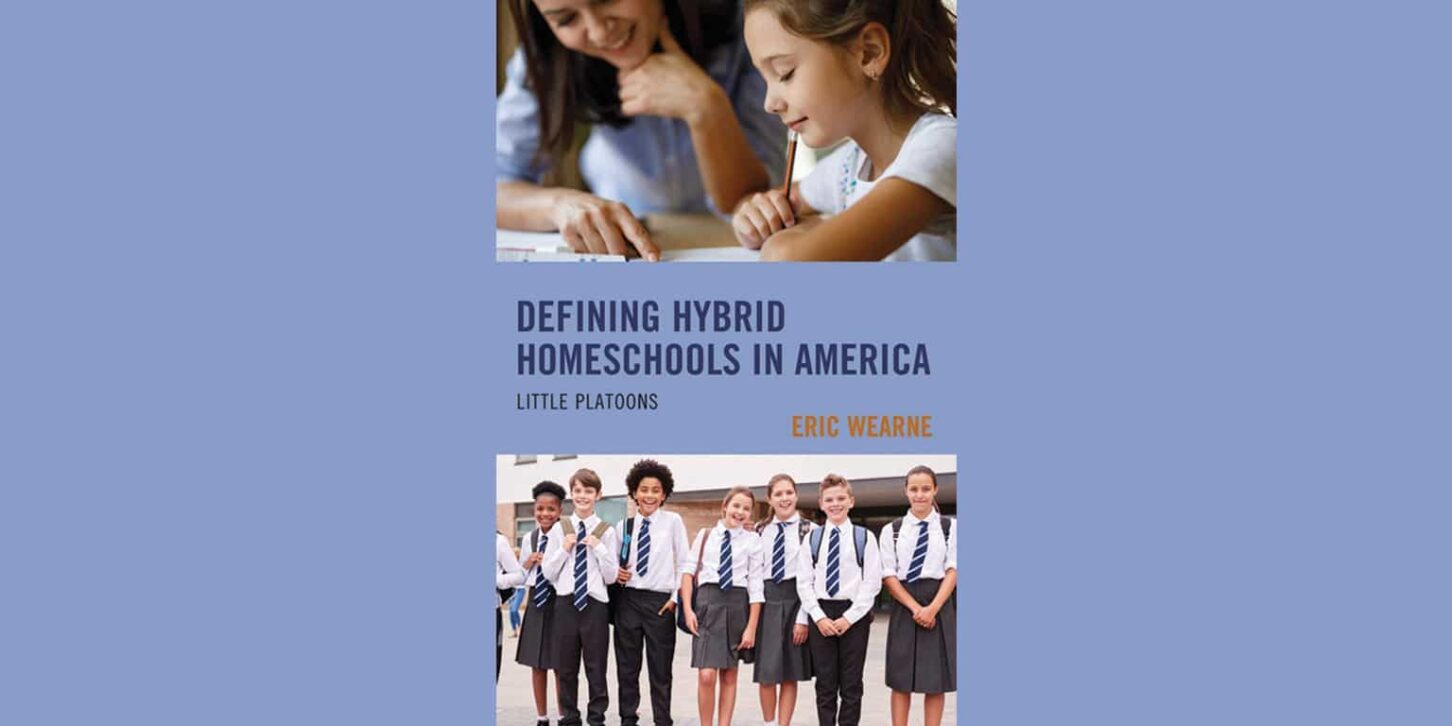

Talk about timely. Eric Wearne’s book, “Defining Hybrid Homeschools in America: Little Platoons,” was released in November, as school systems waffled on attendance policies during the COVID-19 pandemic. It offers a fascinating insight into a form of schooling developing in communities throughout the United States and gaining momentum in an unexpected period of educational uncertainty.
Wearne, an associate professor with the Education Economics Center at Kennesaw State University and a Senior Fellow with the Georgia Public Policy Foundation, seeks to address an essential question policymakers and families grapple with as they evaluate education options for their children: What exactly is a hybrid homeschool?
The 164-page book is a welcome explanation of this previously undefined field of scholarship. As Wearne notes, there was “(scant) research literature to date on hybrid homeschools” upon embarking on this book. Using a broad swath of historical examples, philosophical grounding and narratives from parents, teachers, administrators and students, Wearne delivers a comprehensive picture of both the challenges and the potential within the hybrid homeschool.
He begins by acknowledging the issue facing what he terms the “broad middle class”: a lack of the options readily available to wealthy families, who can choose a private school or can move to a better school district, and limited access to the scholarship programs often available to low-income or special-needs students. The solution this book studies to that issue is the hybrid homeschool.
“In its most common form, a hybrid homeschool enrolls students who go to a school building, with classmates, teachers, and desks, two to three days per week, and are homeschooled the rest of the week,” Wearne rites. A difficulty, he acknowledges, is that the “hybrid homeschool” term is not even universal among the facilities he studied. There are labeling conflicts within the larger movement, leading to challenges for policymakers as they seek to define and build a governing framework around these hybrid schools: Are these students regulated as homeschoolers? For Georgians, the implications of this have resulted in issues regarding their school accreditation, and in turn whether they qualify for immediate HOPE eligibility upon enrolling at state colleges.
One intriguing aspect is how Wearne equates the hybrid homeschool model with other movements back toward local providers within society in general, among them, “craft beers, farm-to-table restaurants/shops, and just in-time, individualized experiences in a variety of other areas.” In education policy, he specifically cites a desire among many parents to return to a more holistic form of education rather than the technocratic approaches that defined the early 2000s.
Wearne’s research offers insight into the demographics of these families and their motivating factors for enrolling their children, the religious/secular nature of these schools, and the essential issues facing all forms of K-12 education today: class size, testing accountability, and college and career readiness. In addition to these well-known parameters of educational assessments, most hybrid homeschools are defined by the manner in which they seek to deliver a tailored learning experience for a small group of students, rather than a one-size-fits-all approach.
The numerous stories by parents, students and teachers make this book an inviting read for parents evaluating additional education options for their child. Even better, Wearne offers concrete policy solutions for policymakers to consider that will assist in both the regulatory framework around these schools, and in ensuring the future development of entrepreneurial education choices that will best support childhood development.
“Defining Hybrid Homeschools in America: Little Platoons,” Eric Wearne,
Lexington Books.